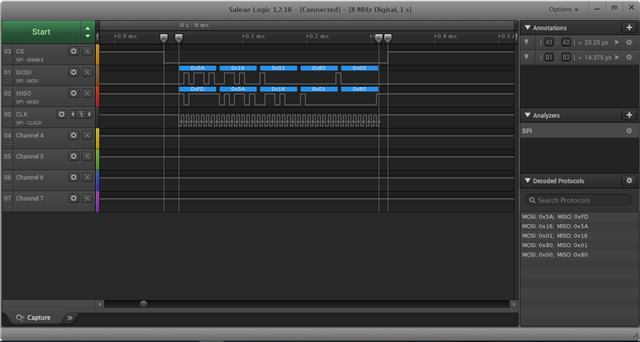Hi,
I working on a project that need to communicate with other mcu by SPI, the communication is work, but I have question about the start and stop of communication.
The version now using is: nrf51822, s130, SDK12.
SPI setting: master, 125KHz
Attached is the timing from logic analyzer.

Q1: After the chip select go LOW, about 25us later, the clock start. Is this time fixed or can make it shorter ?
Q2: When clock finish, about 17us later, chip select go HIGH. Also, is this time fixed or can make it shorter ?
Thank You !!



